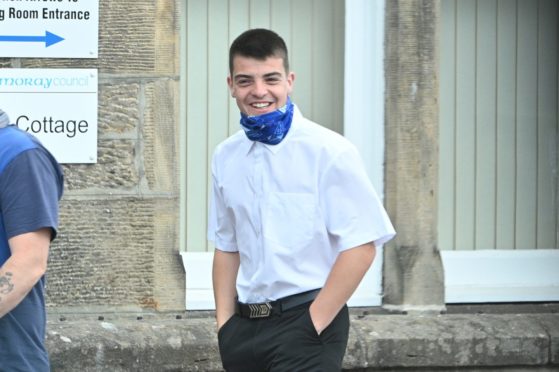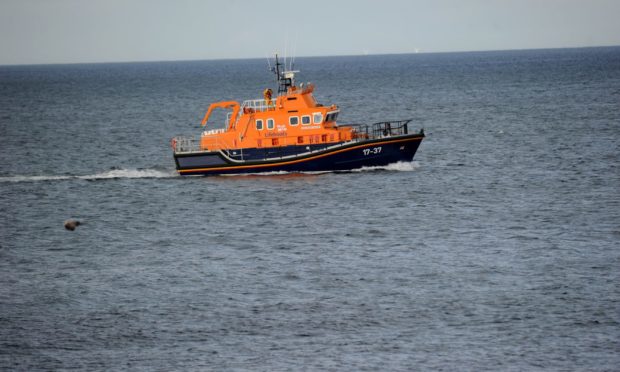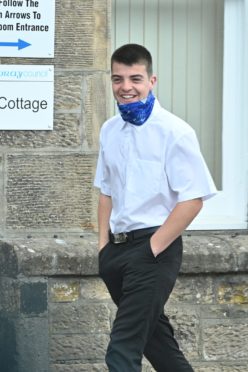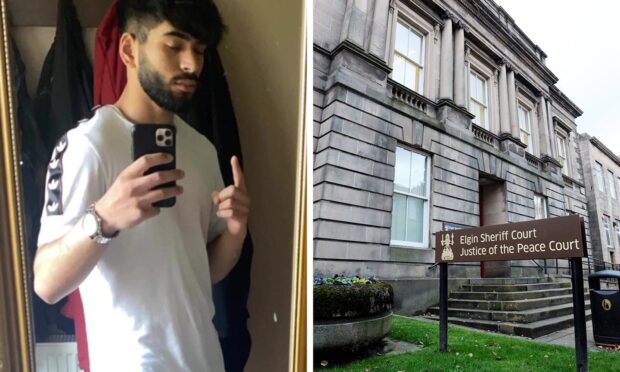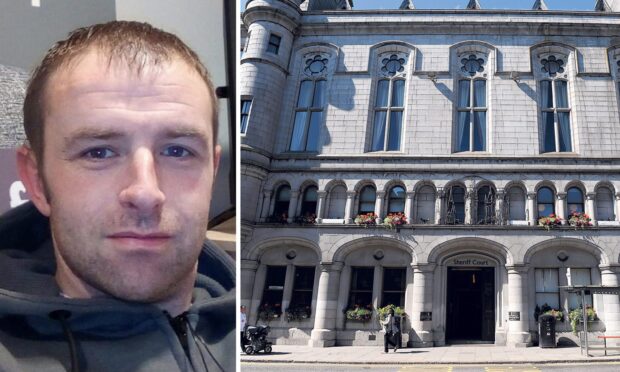A lifeboat volunteer who made a spate of hoax coastguard calls out of “utter stupidity” and in the hope of being picked to respond to them has escaped a spell behind bars.
Leon Marandola, 20, was a member of the RNLI in Buckie when he made 19 hoax calls, of which 10 were attended to, between June 17 and August 25 2019.
Today that court heard how Marandola sent messages he knew to be false through VHF radio, 999 calls and Facebook posts, flagging that vessels or people were requiring rescue at sea.
In one instance a helicopter crew was diverted all the way from Stornoway to the north coast whilst dealing with an emergency.
‘He felt somewhat adrift, so to speak’
Marandola’s solicitor Matthew O’Neill said it was his lack of experience which was the motive for the calls to his hometown crew.
He said: “His hope was that he would be in a position to assist should the need arise.
“Whilst volunteering with the organisation Mr Marandola felt somewhat adrift, so to speak, with regards to forming relationships with others while working at the station.”
Mr O’Neill suggested the 20-year-old felt he “didn’t have much to do” as the others with more experience were consistently picked to respond to calls, hence his motivation to force needless call-outs.
“The calls would hopefully, in his mind, require the assistance of the boat being launched with him upon it,” said Mr O’Neill.
“He didn’t take into account that would have a detrimental effect on the RNLI should they be called to a genuine emergency.”
He added that motive was “difficult to understand” and that the circumstances were the “most perplexing” he had ever come across, given Marandola dedicates much of his time to voluntary organisations.
Although he is no longer associated with the RNLI, Marandola volunteers with the local radio station and town’s swimming pool, and is a helper with Enable Scotland and a captain at his local Boys’ Brigade.
At the time of the offences, the then 18-year-old had been caring for his grandfather for five years.
Mr O’Neill said a downturn in Marandola’s grandfather’s health around the time of the hoax calls had left him feeling “hopeless”.
“Mr Marandola has tried to help people for the majority of his life,” he added.
He also claimed Marandola was “deeply remorseful” and accepts his actions were “beyond foolish”.
‘Utter stupidity’
Sheriff Olga Pasportnikov called the crimes “calculated and devious”.
She told Marandola: “Having been asked to be a volunteer for the RNLI you would have known the impact your actions would have had.”
She said it was “fortunate” almost half of the calls were recognised as hoaxes, given that crew members were leaving paid jobs to attend to them.
“You put lives at risk,” she added. “Not only of the volunteers sent out to your calls, but those who might have genuinely needed the services of the RNLI during that time.
“Beyond foolish is what your solicitor called it, utter stupidity is what I say.”
Caught out by complex operation
The court heard that even once the senior Coastguard operations manager for Moray cottoned on the hoaxes and appealed for help to end the problem, Marandola tried to “cover his tracks” by making up a fictional character who he tried to pin the blame on.
Police Scotland worked with telecommunications regulator Ofcom using specialist equipment to snare Marandola by tracing where his transmissions were coming from.
Sentencing
The first-time offender admitted repeatedly breaching the Communications Act by knowingly providing false information at Elgin Sheriff Court in April.
Today Sheriff Pasportnikov said she was satisfied Marandola’s actions were “not as a result of malice, but more naivety, stupidity, and his compulsive nature”.
She took into account his mental health issues, including obsessive compulsive disorder and suspected autism, to offer a direct alternative to custody.
Marandola, of Buckie’s Gordon Street, must undertake 240 hours of unpaid work during the next 18 months, comply with a nighttime curfew, and remain under supervision for two years.
‘Think twice before making false calls’
Coastal Operations Area Commander Ross Greenhill said: “Hoax calls are taken extremely seriously as they tie up vital life-saving resources and risk taking them away from those who are actually in grave danger which could have serious consequences.
“As in this case, we will always work with the relevant authorities to fully investigate and seek a prosecution if we suspect hoax calls are being made.
“This case stands out because the offender is someone who wanted to work alongside emergency services to help people and prevent loss of life at sea. Each time he made a false report, he put the safety of his fellow volunteers at the RNLI and HM Coastguard at risk and let down his local community.
“We hope the sentencing today makes others think twice before making false calls to any of the emergency services.
“Putting the lives of members of the public and of emergency services colleagues at risk will never be tolerated.”
Specialist equipment used to trace calls
Detective Constable John Riddell, of Elgin Police Station, said: “Marandola abused his position making a series of hoax calls which not only caused considerable expense to the organisations but moreover put staff and volunteers at unnecessary risk.
“The police enquiry involved reviewing transmission recordings which was assisted by working in conjunction with OFCOM.
“Specialist equipment was used to capture transmissions and compare these to known hoax calls.
Data from each transmission was then analysed to work out the area from which the hoax call was made. This is a complex process as each distress call is treated seriously, with the organisations working around the clock to answer genuine calls.
“Hoax calls cost lives. Every false or inappropriate call takes up precious time of the emergency service and prevents someone who really needs immediate help from getting it.
“We will not hesitate to arrest and charge those who misuse the 999 system or make hoax contact to any emergency service.”
